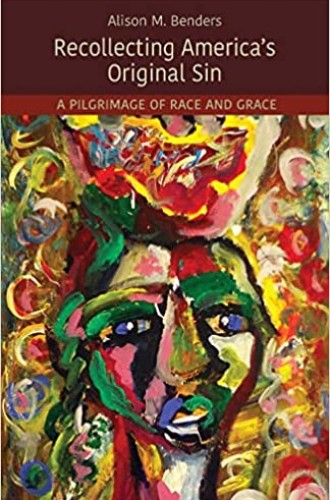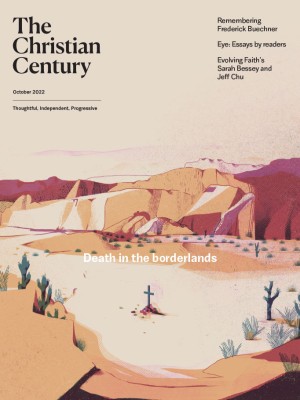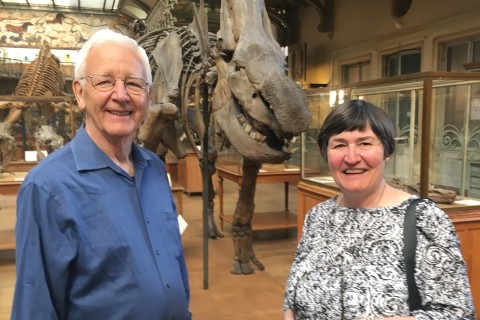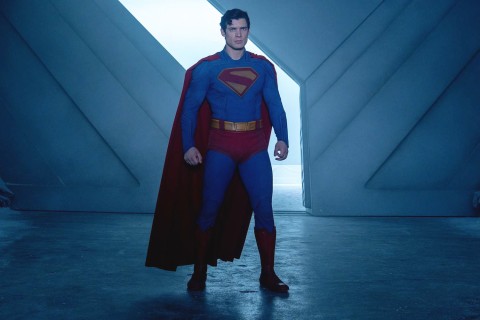Following the long shadow of America’s original sin
Theologian Alison Benders takes an online pilgrimage through our country’s racial history.
My family and I recently drove several hours to a secluded mountain town in the Los Padres National Forest. When we arrived, we quickly realized that we didn’t have cell reception.
I couldn’t have been more delighted. Being fully present to the people I love and the rest I craved became the greatest gift of all, the deepest of invitations into the sacred moment of now. This sentiment is much the same—and perhaps even heightened—for theologian Alison Benders when she embarks on a self-described color-line pilgrimage to trace the sin of racism through pivotal moments in our country’s history.
During this journey, “time is paused but full of possibilities—a pregnant pause,” almost all of which takes place from the confines of Benders’s home in Berkeley, California. Although she originally planned for a civil rights tour of several southern states, the pandemic interrupted her plans, “just as it interrupted the whole world.” This turn of events, however, makes Benders’s personal journey wholly accessible to anyone who dares enter into her story, chapter by chapter, moment by moment.
Read our latest issue or browse back issues.
Benders, who holds an ecclesiastical degree from the Jesuit School of Theology, enters into “moments of lament, moments of conversion, and great gifts of journey.” As an Irish-American woman, she imagines walking through the South with the aid of a knobby-handled blackthorn shillelagh. By confronting the privilege and complicity she was born with, she weaves her way through various findings in a style that shows her to be a learned companion, a spiritual guide, and a scholarly adviser.
Although her discoveries happen in isolation, the reader feels the chains of slavery in the past and present when Benders examines Louisiana’s sordid history. We too stand on the banks of the Mississippi, past “the ironwork and alleys of the French Quarter,” and on into the levees’ ominous shadow in the Lower Ninth Ward.
“As I gazed upon the sugar fields,” she writes, “swatting bugs from my neck, an unnerving insight flashed in my mind: all of this human violence, all of this suffering, was greed-driven.” Soon thereafter, she connects this realization to her own family’s story of achieving the American dream: her great-grandfather’s livelihood relied on exploited labor. Although her family worked hard to fulfill their goals, they did so at the expense of people of color, the White man’s advancement a stumbling blow to the Black laborers who suffered in exchange.
Benders’s recognition of complicity is nothing new. She quotes the likes of Isabel Wilkerson, Jim Wallis, and Martin Luther King Jr., inviting readers to enter into new understandings of history—even if such understandings are something that White readers aren’t always keen to grapple with.
As a White woman who, like Benders, is in an interracial marriage and raising mixed-race children, I know that the conversation is far from over. Until we, as a country, no longer have to continue talking about issues of race, we have to keep talking about issues of race. Certainly, those of us who are White have to keep listening and leaning into the stories of those who go before us and beg us to change, even as our realizations of White supremacy’s reign are nothing new under the sun.
But Benders, who is clearly writing for an audience that knows and shares the Jesuit tradition with her, could have pushed her readers to ask new questions of themselves. By homing in on the identity of her singular, sacred audience, she might have come to serve the conversation in even more tangible ways.
As a non-Jesuit reader, I wanted to understand how her community has been complicit in acts of racism and White supremacy. It’s one thing for an individual such as Benders to repent, but it’s an entirely different thing for a religious order to own its complicity and thus take collective steps forward toward change.
We see hints of this when she writes, “My own faith ancestors both shamefully sinned against their fellow human beings and audaciously triumphed over the surrounding sin-soaked culture.” But as a Protestant reader, I found myself wanting her to dig in deeper. Where are Jesuit communities now when it comes to reckoning with the order’s racist past? What has the Catholic Church done to address structural racism and the entrenched caste system of past and present-day America? What is the call to this particular community that only she can make?
The truth is this, though: just as “Christ’s resurrection continues to be the Cain-raising, world-disrupting event central to the meaning of Christianity,” Benders’s new book is a disruption to archaic, upside-down systems that continue to benefit some but not all. If her words can be a balm toward healing the wounds of racism and White supremacy, both in the past and in the present, then she’s done her job. Her words have unearthed the long shadow of America’s original sin—a sin that begs to be discarded, thrown aside, and done away with for good.





